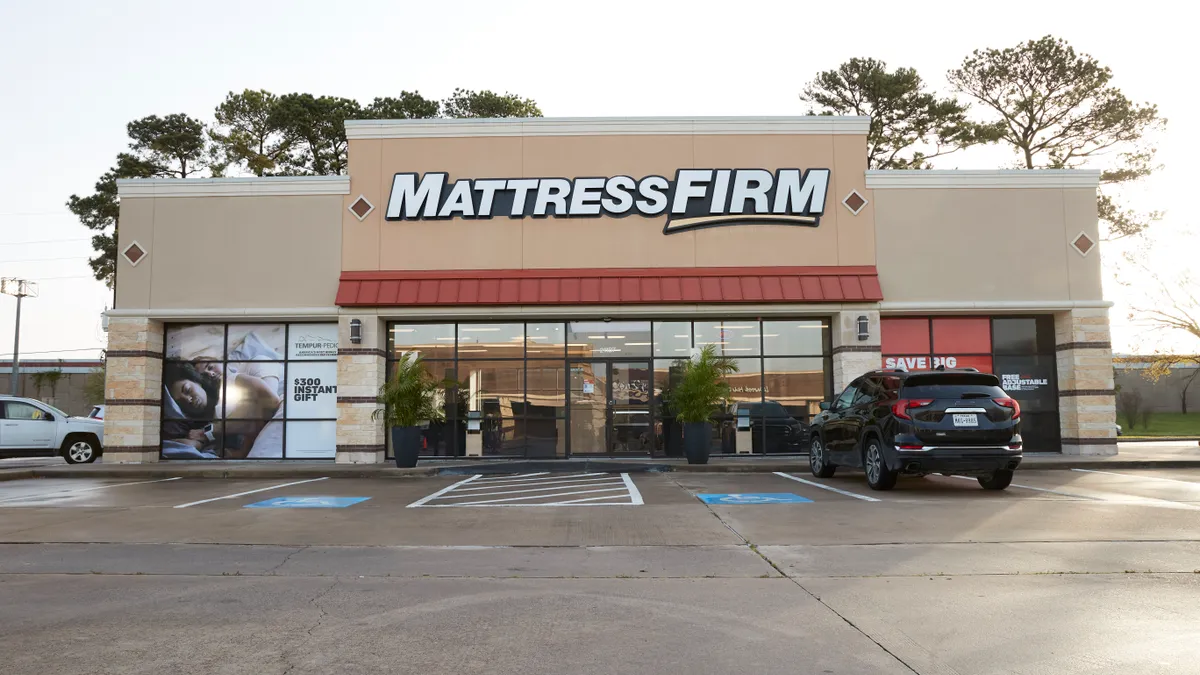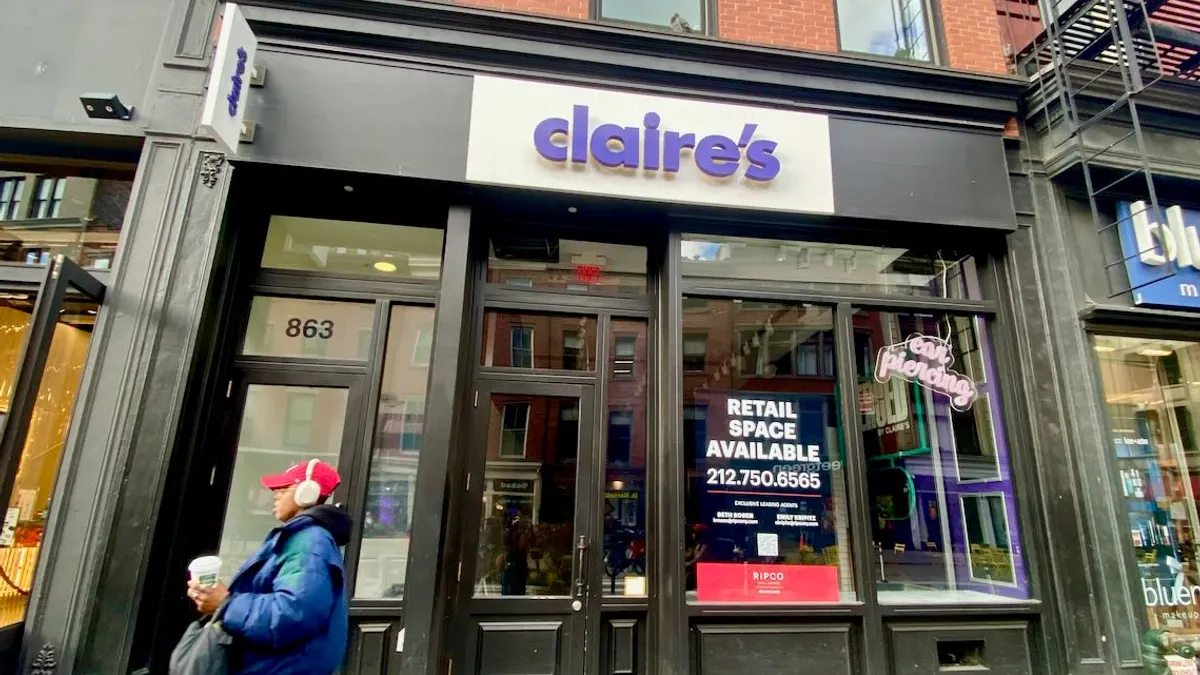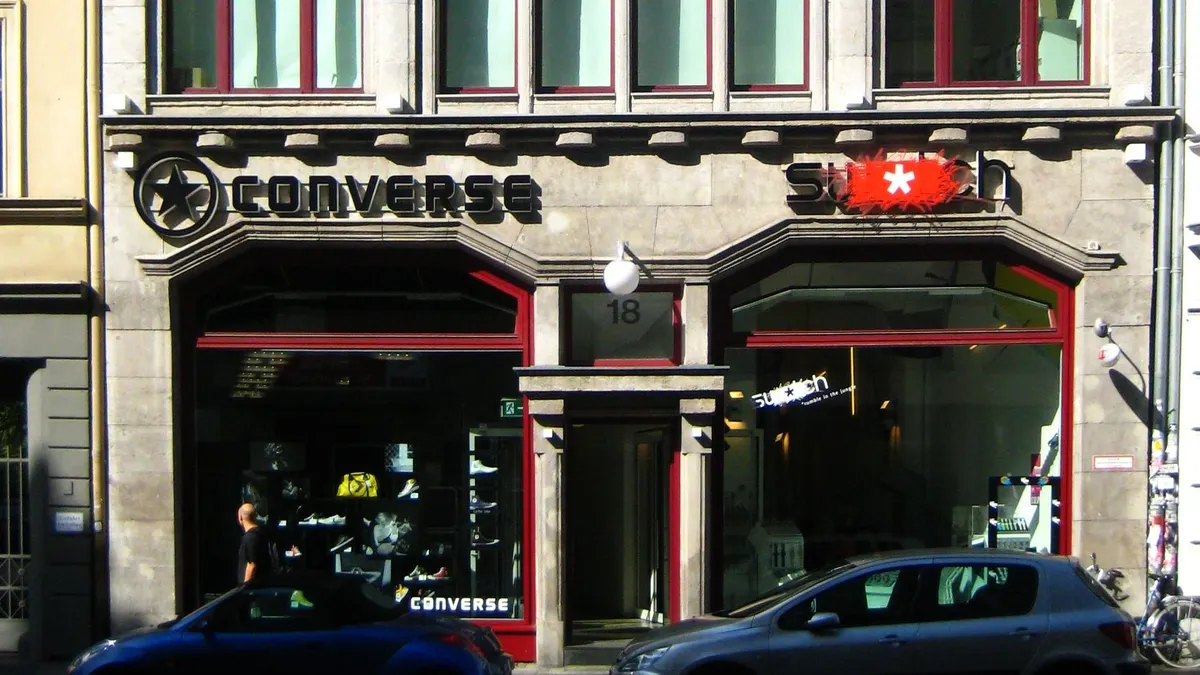Mattress Firm this month filed paperwork for an initial public offering, but a little over three years ago the company entered — then quickly exited — bankruptcy.
The retailer, which describes itself as a leader in its segment, says that it has garnered around 20% of mattress market share as of 2020 and estimates that it is nearly twice the size of its next largest competitor, based on U.S. mattress sales.
With over 2,300 stores, Mattress Firm also says that about 82% of the U.S. population lives within 10 miles of one of its brick-and-mortar locations — as long as you don't count areas "without enough of a concentrated population to profitably support a store," which the company estimates excludes about 28 million people.
Going public is a rising trend. In 2021, around 20 major retailers listed publicly via IPOs, direct listings and de-SPAC transactions. Mattress Firm was one of those, after confidentially filing draft documents with the Securities and Exchange Commission for its initial public offering in September of that year.
From Chapter 11 to preparing an IPO, Mattress Firm has had a dramatic business trajectory. Especially considering that the time period between those events has been largely defined by a pandemic.
What the company has experienced, and hints to what may be on the horizon, can be found within its own documents. Here are nine major takeaways from the company's S-1 form:
1. Mattress Firm relies heavily on its relationships with Tempur Sealy and Serta Simmons (and Tempur Sealy terminated their contract once before)
Tempur Sealy accounted for 36.6% and Serta Simmons accounted for 27.8% of the company's mattress product costs in fiscal 2021. Mattress Firm said that its "success depends on the continued popularity and reputation of these suppliers."
But, Mattress Firm had a serious hiccup with one of these brands once before. In February 2017, Tempur Sealy sent Mattress Firm a notice of termination, thereby ending its supply of products to the retailer. That included all three national brands of Tempur-Pedic, Sealy and Stearns & Foster items. In 2019, after Mattress Firm's trip through bankruptcy, the companies entered into a new supplier agreement.
2. Leadership landed big bonuses around the time of the company's Chapter 11
Mattress Firm had a discretionary performance bonus of $135.3 million that it paid to "eligible current and former employees," a payment of $14.6 million to a number of "non-employee directors," and $2 million in payroll taxes associated with the bonuses.
These bonuses were paid "in recognition of efforts made to exit bankruptcy and our post-restructuring transformation."
3. Those bonuses added to the C-suite's total compensation package for the year
The company's S-1 document states the base salaries of Mattress Firm's executive team.
Executive Team base salaries
| Name | Position | Base Salary |
|---|---|---|
| John Eck | Chief Executive Officer | $850,000 |
| Maarten Jager | Chief Financial Officer | $600,000 |
| Jody Putnam | Chief Retail Officer | $383,333 |
| Larry Fultz | Chief Human Capital Officer | $350,000 |
| Jon Sider | Chief Information Officer, Chief Operating Officer of E-commerce | $350,000 |
Again, the company paid a one-time performance bonus to named executive officers last fall. Here's the breakdown of those bonuses.
One-time performance bonuses for the executive team
| Name | One-time Performance Bonus |
|---|---|
| John Eck | $39,183,172 |
| Maarten Jager | $11,754,952 |
| Jody Putnam | $7,836,634 |
| Larry Fultz | $8,424,382 |
| Jon Sider | $7,836,634 |
Here is the total compensation of top executives for fiscal 2021, which includes each person's base salary, bonus, and other forms of compensation.
Total compensation of the executive team
| Name | Base Salary | Bonus | Non-Equity Incentive Plan Compensation | Additional Compensation | Total |
|---|---|---|---|---|---|
| John Eck | $850,000 | $39,183,172 | $1,700,000 | $20,767 | $41,753,939 |
| Maarten Jager | $600,000 | $11,754,952 | $600,000 | $6,062 | $12,961,014 |
| Jody Putnam | $383,333 | $7,836,634 | $400,000 | $5,292 | $8,625,259 |
| Larry Fultz | $350,000 | $8,424,382 | $350,000 | N/A | $9,124,382 |
| Jon Sider | $350,000 | $7,836,634 | $350,000 | $6,357 | $8,542,991 |
4. The company gave over $1 billion to its stockholders in September
On Sept. 24, 2021, four days after the company announced that it was exploring a potential IPO, Mattress Firm paid a $1.2 billion dividend to its common stockholders.
Those stockholders include Steinhoff International Holdings (Mattress Firm's private equity owners, which own 50.1% of the company) former lenders and members of the company's executive team.
The company obtained the money to distribute by taking out a $1.2 billion loan on Sept. 24.
5. The business has had losses and it may not be profitable
Like many other retailers that have recently become publicly traded, Mattress Firm is clear that profitability is not promised. "We have incurred significant losses from operations in the past and we may not be able to return to, maintain or increase our profitability," according to the S-1 filing.
Mattress Firm net revenue and net income
| Year | Net Revenue | Net (loss) Income |
|---|---|---|
| 2019 | $2.96 billion | ($965.8) million |
| 2020 | $3.26 billion | $125.6 million |
| 2021 | $4.39 billion | ($165.1) million |
The company also has a significant amount of debt, which it lists under its potential risk factors. Mattress Firm notes that its debt could lead to consequences, including limiting its ability to obtain additional financing, potentially positioning suppliers to demand more aggressive payment terms, and placing the retailer at a competitive disadvantage.
Additionally, an increase in interest rates could impact the company's ability to make scheduled payments on its debt facilities or limit its ability to fund its growth strategy.
As of Sept. 28, the company's total liabilities stood at $3.5 billion.
Mattress Firm net debt
| Year | Net Long-Term Debt |
|---|---|
| 2020 | $235 million |
| 2021 | $1.2 billion |
6. The company recently shifted its workforce to a commission-based model
Mattress Firm employs over 6,500 sales associates, which it calls "Sleep Experts." Those workers all receive around 240 hours of training through a new hire education program that lasts between six to eight weeks.
In 2020, the retailer shifted more to a commission-based compensation model and found that sales per employee increased in the six months that followed the change. Additionally, the company is working on improving tools where store managers can receive commission on customers that visit a store but complete a transaction online.
7. The company has its eyes on expansion online and in major U.S. cities
Mattress Firm wants to increase its presence in a number of markets, including Los Angeles, Buffalo and upstate New York, and Detroit.
The retailer also recently launched a "store of the future" concept that incorporates technology and showcases brands in a shop-in-shop format. All new locations will become stores of the future, and up to 20% of its existing store fleet will be refreshed to this concept annually.
The company also is thinking about its online presence. It had over 62 million visitors to MattressFirm.com in 2021, and launched Sleep.com to help consumers understand "the health benefits of quality sleep."
8. Advertising expenses may increase
The retailer is expecting that advertising expenses will continue at their current level or increase. Furthermore, the company states that it cannot assure that "the net income from new customers we acquire will ultimately exceed the cost of acquiring those customers."
Mattress Firm advertising expenses
| Year | Sales and Marketing Expenses |
|---|---|
| 2019 | $708.9 million |
| 2020 | $704.9 million |
| 2021 | $950 million |
9. Mattress Firm's private equity owner, Steinhoff International Holdings, is going through litigation
Steinhoff International Holdings acquired Mattress Firm in 2016 for $3.8 billion. The private equity company became the subject of a number of international legal proceedings in late 2017 and agreed to a settlement of around 1.4 billion euros ($1.6 billion) in September 2021. Steinhoff received approval to pay out that settlement to around 90,000 investors last week.
An independent report found that Steinhoff was involved in a $7.4 billion accounting fraud where it overstated profits, according to multiple reports.
The company has been selling off a number of assets in order to raise funds, according to Bloomberg.





















